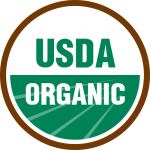healthy eating
Selecting Fruits and Vegetables
Fruits and vegetables taste great and add lots of variety and important nutrients to meals and snacks. Use these buying tips at the grocery store, farmers’ market or produce stand.
1. Choose produce carefully
Avoid fruits and vegetables with cuts, bruises, insect holes, mold or decay. At the same time, fruit does not need to be “perfect” to taste wonderful. All shapes and sizes make great fruit and vegetables.
2. Fresh may not always be the best!
In the middle of the winter, you can get peaches from Peru, but they are expensive and have traveled for weeks by the time you buy them. Fresh produce is best when bought in season and locally for maximum flavor and nutrition. Research has shown that frozen fruits and vegetables are just as nutritious as fresh vegetables and have less waste.
Be mindful when buying canned fruits or vegetables. Canned fruits and vegetables are also nutritious but often have added salt and corn syrup- and nutrients may be lost in the liquid in the can. Avoid those with added corn syrups and added salt.
3. Fruit is widely available year round but ripeness is the key
When a fruit is ripe it softens and generally the color changes. Starches turn into sugar although the calories remain the same. The ripening process depends on the fruit. Melons and citrus fruit (for example oranges and grapefruit) will not get any sweeter once picked. Peaches and bananas change color and get sweeter. Some fruits are picked before they are ripe because they bruise easily in shipment (for example: pears and bananas). To ripen, place on the kitchen counter for a few days or place in a brown paper bag. To speed up ripening, add a ripe banana or apple to the bag. When fruit is ripe, eat it right away or refrigerate.
4. Buy fresh vegetables frequently and use them as soon as possible
Select vegetables that are crisp and colorful, not limp and starting to turn brown. For maximum savings, select vegetables in season. Clean and cut them yourself. Prepare them ahead of time and keep them in the refrigerator to make dinner quick and convenient. If convenience is very important to you, look for some of the prewashed and cut up vegetables in your produce section. In addition to bags of salad, you will find chopped onions and peppers, grated carrots and cabbage for slaw and ready to cook stir fry vegetables.
5. Buy frozen unsweetened fruits and vegetables without added sauces
Keep frozen until ready to use. Use within 6 months of purchase. Frozen fruits and vegetables are handy for quick and easy meal additions.
 What Does “Organic” Mean on a Food Label?
What Does “Organic” Mean on a Food Label?
The term organic has specific guidelines defined by the United States Department of Agriculture (USDA) National Organic Program.
It states that organic meat, poultry, eggs and dairy products come from animals that are given no antibiotics or growth hormones. Organic plant foods are produced without using most conventional pesticides, fertilizers made with synthetic ingredients or sewage sludge, bioengineering or ionizing radiation. A government-approved certifier must inspect the farm to ensure these standards are met. In addition to organic farming, there are USDA standards for organic handling and processing.
There are three levels of organic claims on food labels:
- 100-percent Organic. Products that are completely organic or made of only organic ingredients qualify for this claim and a USDA Organic seal.
- Organic. Products in which at least 95 percent of its ingredients are organic qualify for this claim and a USDA Organic seal.
- Made with Organic Ingredients. These are food products in which at least 70 percent of ingredients are certified organic. The USDA organic seal cannot be used but made with organic ingredients may appear on its packaging.

